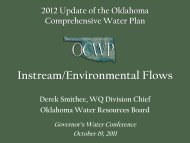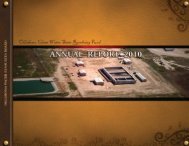Intended Use Plan for FY-2012 - Water Resources Board - State of ...
Intended Use Plan for FY-2012 - Water Resources Board - State of ...
Intended Use Plan for FY-2012 - Water Resources Board - State of ...
Create successful ePaper yourself
Turn your PDF publications into a flip-book with our unique Google optimized e-Paper software.
3.2-2 Projects that achieve a 20% reduction in energy consumption are categoricallyeligible <strong>for</strong> GPR 4 . Retr<strong>of</strong>it projects should compare energy used by the existingsystem or unit process 5 to the proposed project. The energy used by the existingsystem should be based on name plate data when the system was first installed,recognizing that the old system is currently operating at a lower overall efficiencythan at the time <strong>of</strong> installation. New POTW projects or capacity expansion projectsshould be designed to maximize energy efficiency and should select high efficiencypremium motors and equipment where cost effective. Estimation <strong>of</strong> the energyefficiency is necessary <strong>for</strong> the project to be counted toward GPR. If a projectachieves less than a 20% reduction in energy efficiency, then it may be justifiedusing a business case.3.2-3 Collection system Infiltration/Inflow (I/I) detection equipment3.2-4 POTW energy management planning, including energy assessments, energy audits,optimization studies, and sub-metering <strong>of</strong> individual processes to determine highenergy use areas, which are reasonably expected to result in a capital project areeligible. Guidance to help POTWs develop energy management programs,including assessments and audits is available athttp://www.epa.gov/waterinfrastructure/pdfs/guidebook_si_energymanagement.pdf.3.3 Projects That Do Not Meet the Definition <strong>of</strong> Energy Efficiency3.3-1 Renewable energy generation that is privately owned or the portion <strong>of</strong> a publiclyowned renewable energy facility that does not provide power to a POTW, eitherthrough a connection to the grid that the utility draws from and/or a directconnection to the POTW.3.3-2 Simply replacing a pump, or other piece <strong>of</strong> equipment, because it is at the end <strong>of</strong> itsuseful life, with something <strong>of</strong> average efficiency.3.3-3 Facultative lagoons, even if integral to an innovative treatment process.3.3-4 Hydroelectric facilities, except micro-hydroelectric projects. Micro-hydroelectricprojects involve capturing the energy from pipe flow.3.4 Decision Criteria <strong>for</strong> Business Cases3.4-1 Project must be cost effective. An evaluation must identify energy savings andpayback on capital and operation and maintenance costs that does not exceed theuseful life <strong>of</strong> the asset.http://www.epa.gov/waterinfrastructure/pdfs/guidebook_si_energymanagement.pdf3.4-2 The business case must describe how the project maximizes energy savingopportunities <strong>for</strong> the POTW or unit process.3.4-3 Using existing tools such as Energy Star‟s Portfolio Manager(http://www.energystar.gov/index.cfm?c=evaluate_per<strong>for</strong>mance.bus_portfoliomana4 The 20% threshold <strong>for</strong> categorically eligible CWSRF energy efficiency projects was derived from a 2002Department <strong>of</strong> Energy study entitled United <strong>State</strong>s Industrial Electric Motor Systems Market OpportunitiesAssessment, December 2002 and adopted by the Consortium <strong>for</strong> Energy Efficiency. Further field studies conductedby Wisconsin Focus on Energy and other <strong>State</strong>s programs support the threshold.5 A unit process is a portion <strong>of</strong> the wastewater system such as the collection system, pumping stations, aerationsystem, or solids handling, etc.4/21/2010 PART A - CWSRF 9


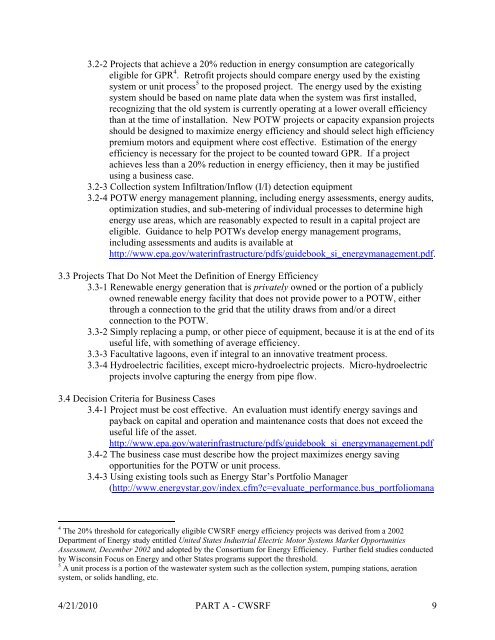


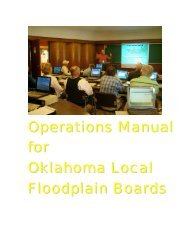
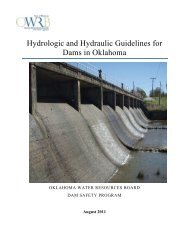


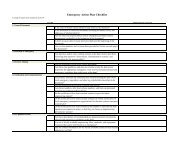
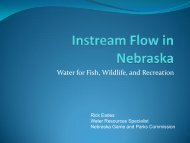


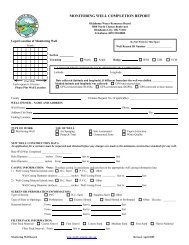
![A Commodity & a Resource [pdf] - Water Resources Board - State of ...](https://img.yumpu.com/42536671/1/190x143/a-commodity-a-resource-pdf-water-resources-board-state-of-.jpg?quality=85)
